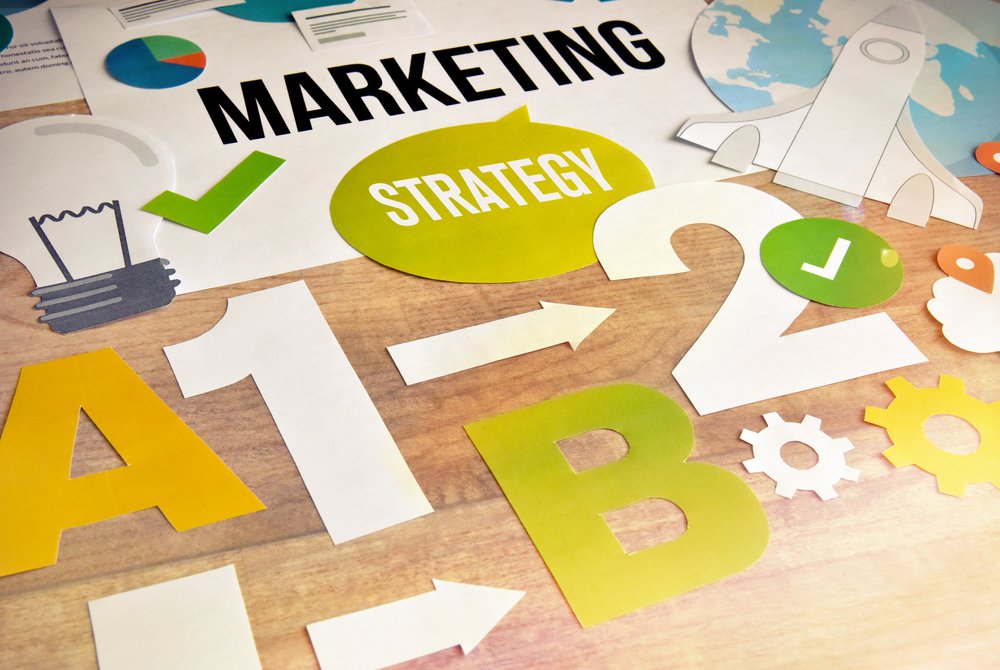Why Marketing Collateral Is Essential for Your Business to Survive
Digital marketing means sales teams now have to battle their competitors in two spaces. In the physical world, brands spread their message through flyers, posters, billboards and broadcast ads. At the same time, they have to contend with rivals online by publishing blogs, sending emails, sharing social media posts and uploading videos on streaming sites. In both cases, their choice of marketing collateral and sales tools will greatly affect their success.
Regardless of what you’re selling, the competition is fierce. Individual brands must raise their game to get attention. Simply talking about your product often isn’t enough; you also have to convince your audience that you’re the best company to trust. The right marketing collateral can help you tell customers a more complete story.
Marketing collateral is a collection of various media materials that support your efforts to sell a product or service. Let’s explore the types of collateral you need to connect with customers and build a stronger brand.

Types and Key Differences of Marketing Collateral
Sales and marketing collateral once referred specifically to support materials such as product specification sheets, brochures and other pieces that made selling easier. But when computers and the internet became mainstream, other types of marketing collateral became popular as well. Think sales videos, web content and social posts.
Note that marketing collateral doesn’t need to make an outright sales pitch to the audience. Its primary purpose is to provide enough information so audiences know both the product and the seller better.
More importantly, it gives audiences the reasons they should buy from you instead of other suppliers. By covering all these bases, marketing collateral helps a brand stay relevant throughout the stages of the sales journey.
Classifications and Examples of Marketing Collateral
Almost any material that a company produces to support a product’s marketability can be classified as marketing collateral. For easier reference, we’ve grouped together some of the more popular types according to their primary purpose.
Brand Introduction and Identity
When buyers first hear about a product, they’ll want to learn more about it and its maker. Brands should ensure that audiences get information that’s correct and accurate.
Among the most important materials to create is a brand and/or product logo. This visual identity is crucial in maintaining an associated image in customers’ minds. Business cards bearing a sales rep’s contact information give prospects a way to initiate communication.
Other marketing collateral that helps reinforce the brand are company profiles, a company history and biographies of founders and key officers. By sharing how the brand came to life and who’s behind it, you boost your credibility and establish authority.
Product Introduction and Information
With the brand introductions out of the way, people will also want to know more about the product they’re interested in. This is where product brochures, flyers, spec sheets, white papers and other technical details can help. For people at the bottom of the sales funnel, basic information about a product can help them make an informed decision about whether this solution is right for them.
Competitive Analysis
Prospective customers who are still undecided about their plans will often pit one product against another. So, sellers should produce marketing collateral that highlights their advantages over their rivals. For instance, “why-buy” marketing materials focus on a product’s strong points to reinforce the idea that they’re a good purchase.
Understandably, many buyers want the opinion of a neutral authority. That’s why many unsure buyers search for third-party product reviews, independent testing results or customer testimonials. Brands should collect customer reviews and share them on their website, social channels and printed materials.
Academic and Research Papers
Even the most skeptical buyer will accept and consider opinions from academic and authority sources. If your product is the recipient of a scholarly review, a topic for academic research or a subject for peer review, make sure your prospects know about it. After all, most consumers will happily jump on the bandwagon if authority figures can confidently endorse a product or give a positive review.
Presentation and Pitch Decks
Sales presentations and pitch decks to prospective customers can also support the brand and product campaigns. These materials target leads at the top of the sales funnel by going over a client’s problem and introducing the product as the solution. Pitch and presentation decks often contain traces of all types of marketing collateral.

Marketing Collateral in the Digital Age
All marketing collateral should be made available online for prospects to easily discover. To further increase awareness, brands can also create additional collateral like emails, social posts, landing pages and promotional videos that point viewers to the product site and online store.
What’s more, going digital doesn’t just mean storing digitized archives of previously published marketing collateral. It could also include academics and professional reviewers discussing your product in a podcast or webinar.
Modern Marketing Communication
Take the email newsletter. Don’t simply send customers and prospective buyers a renewed sales pitch every week. Instead, develop a newsletter that covers both direct sales material and more topical information. By including various subjects, the newsletter is more likely to appeal to a wider and more diverse audience.
More importantly, add a call to action (CTA) at the end of the newsletter that invites viewers to take initiative and move forward. This is an opportunity for both you and your buyers to speed up the sales process and take your client relationship to the next level.
Sales presentations are also undergoing changes for the better. Gone are the static slideshows that only move in one direction. Modern presentation software now uses interactivity to create more compelling stories. In addition, entire teams can collaborate on a single presentation regardless of where they’re located. And thanks to cloud saving, members can help each other create a complete deck.
The Rise of Artificial Intelligence
Today’s computers and IT tools are smarter and more responsive than ever. For marketers, this means using artificial intelligence (AI) to make routine tasks more efficient and effective.
For instance, most brand sites now employ chatbots to answer customer inquiries. These AI-powered conversationalists are available 24/7 to answer common questions.
In addition, chatbots can draw from customer profiles and purchase histories to make personalized recommendations to buyers. Plus, the insights gathered from every customer conversation help company leaders develop better and more relevant programs to engage customers.
AI is also on the front line in the evolution of marketing collateral. AI-powered platforms can now automate routine marketing tasks such as lead generation and email marketing. These platforms are even helping build product presentation pitches, generate AI illustrations and videos and compose music scores. With less time spent on repetitive, time-consuming tasks, sales and marketing teams can spend more time focusing on brand growth and increasing sales.
Nurture Customer Relationships Through Collateral
Why are some brands better at making customers care? And what makes buyers develop an emotional connection to some brands while labeling others as “trying too hard”?
For one thing, authenticity plays a great role in determining trust in a company. The more your brand speaks from the heart, the more customers are likely to believe in what you’re selling. Present a consistent message, keep your promises and show genuine concern. Doing so will wow your buyers and generate sales referrals, which are essential to growing your business.
Personalizing your marketing collateral where possible can also help you find and keep customers. Again, digital tools make it easier than ever to track shoppers’ browser and purchase history, so use these insights to make personalized recommendations for products and services.
For instance, use what you know about your customers to develop a customized sales catalog for their unique needs. A company that specializes in home improvement might pull data on what images a shopper viewed, the colors they filtered and the product pages they spent time on. If the customer was looking at wallpaper swatches in blue tones, your sales rep could simply pull popular blue patterns into a custom sales catalog.
Tell a Complete Story Through Personalization
Marketing collateral such as presentations and sales catalogs can actually help brands tell a more complete story to their customers. Even an obvious sales pitch can be engaging and relatable when you’ve personalized the words and images.
These tips can help you build personalized sales presentations that resonate:
- Be Transparent: Specifically, use transparency, authority, accuracy and authenticity when outlining your presentation objectives. The goal is to offer a solution that solves the client’s problem.
- Offer Proof: Provide proof that your brand has more than enough experience to handle the problem. When stating facts, make sure you have hard data to back up each one.
- Stay True to Your Goals: Again, be authentic when offering your solution. Any eagerness to close the deal without going over a client’s specific concerns will send the wrong signals.

Building a Strong Brand With Collateral
Consistency is also a key way to establish trust with your audience. Your messaging must align across all pieces of your marketing collateral. However, we’re not just talking about words—brand elements such as the logo, mission/vision statement and tone should remain consistent throughout the brand’s lifetime.
Consider one of the most trusted home improvement brands out there: Mr. Handyman. Home renovation “best-of” lists regularly recommend the company’s services, such as painting, carpentry, plumbing and more. Mr. Handyman knows exactly what it delivers, which has helped strengthen its brand positioning in the market. And whether you’re visiting the business’s website or Facebook page, you can expect the same branding and messaging throughout.
Your brand position is how customers see you in relation to your competitors. Basically, they assess how well you deliver what they want, need and expect. Of course, you must be realistic about how you can meet their needs. Luxury countertops at bargain prices? It may not be possible.
Once you’ve identified and defined the attributes that your brand can deliver, use your marketing collateral to communicate them to the public. This ensures that customers are seeing your brand how you want them to. Your marketing will be more effective, and consumer trust in your brand will skyrocket.
Measuring and Tracking Collateral Effectiveness
Developing sales and marketing collateral is a serious investment, so it’s important to track its effectiveness. Did positive customer feedback rates increase while negative issues decreased? Do more people engage with your social channels and subscribe to your mailing lists?
Ultimately, sales performance will determine overall success. Are more people clicking on your ads? Did customers respond by buying more products and spending more per person? The metrics will show the real story.
If your marketing collateral isn’t having quite the impact you hoped it would, look back at how it was created. For instance, did your marketing team incorporate input from sales when developing customer personas and creating sales materials? Did sales reps share their fieldwork and client notes so that marketing can better understand their actual customers?
These teams must work together. Investing in sales tools like a robust customer relationship management (CRM) platform and interactive presentation software make collaboration a breeze.
Make the Most of Your Marketing Collateral
Marketing collateral is only the beginning. Your organization must listen to your audience, determine and develop the relevant messages and use the right tools to create the materials.
Ingage is a marketing collateral tool that helps teams create highly interactive sales presentations. With its cloud save system, entire teams can log into the same file and jointly develop highly engaging presentations. Plus, interactivity features let you build a presentation that follows the conversation. Easily move in any direction, return to a previous section and collapse or expand areas that hold more details.
Not presenting in person? No problem—simply send clients a link to the online presentation. What’s more, advanced analytics features let you track user reactions to every section. You can then pick out which sections generated great engagement and which areas could use more polishing.
Learn more about how Ingage can make your static slideshows more interesting and dynamic. Sign up now for a free demo and see why more than 100,000 Ingage presentations are created every month.
